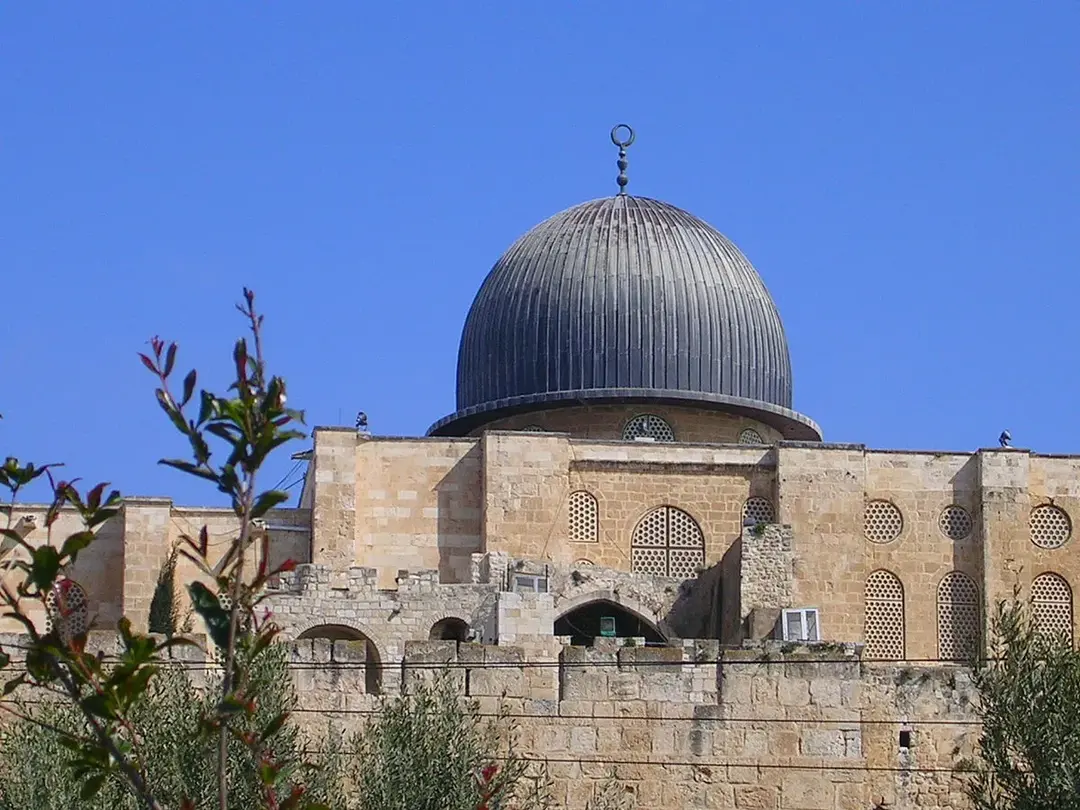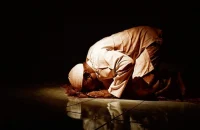What is the 1st Qibla in Islam? The answer is Al Masjid Al Aqsa, Due to its distinctive and rich history as a place of worship intricately linked to the lives of many of the Islamic prophets, as well as its unique status as a Masjid where pilgrimage is encouraged. Rewards are enhanced, they hold a very special place in the hearts of the entire Muslim community. This unique and hallowed mosque is enormous, measuring 144,000 square meters, or almost one-sixth of the whole area of Jerusalem’s Old City, and can house up to 500,000 worshipers. Insha’Allah, we will provide a succinct overview of Al Masjid Al Aqsa’s history below.
1st Qibla in Islam
Al Aqsa is 1st Qibla in Islam, this mosque is located in the center of Jerusalem’s ancient city and gets its name from the Arabic words for “farthest” and “the supreme”. Following Mecca and Medina as the two primary holy places, it is highly revered by Muslims of all stripes.
The Quran makes many references to the Al Aqsa. As an example, the verse 17:1 in Surat Al Isra.
The scripture refers to the Prophet Muhammad’s trip at night from Medina to the Al-Aqsa Mosque in Jerusalem, where he said prayers before being transported across space to meet with the Almighty by a celestial horse.
Islamic texts state that the Prophet Muhammad’s encounter with the Divine occurred outside of the known dimensions of time and space.
From the Masjid Al Haram in Mecca to the Masjid Al Aqsa in Jerusalem, he was miraculously carried to the sky.
At the time of his ascension, the Prophet was going through a lot of suffering at the hands of his family and clan. He and his friends suffered unceasing mockery, humiliation, and persecution for following God’s teaching.
Numerous Quranic verses and hadiths allude to different facets and characteristics of the Al Aqsa Mosque.
Only two mosques—Masjid Al Haram in Mecca and Masjid Al Aqsa in Jerusalem—are specifically mentioned in the Quran.
It also alludes to Al Haram, the Muslim community’s surrounding region around the sacred Kaaba, where worshippers from all over the globe gather to pray and make a circle around God’s dwelling.
Al Aqsa Mosque is likewise identified in the Quran as the hub of Bayt al Maqdis, which is Arabic for “the Holy Land” and “the land of barakah,” or the region of peace and salvation.
Mosque al quds History – 1st Qibla in Islam
Only two mosques—Masjid Al Haram in Mecca and Masjid Al Aqsa in Jerusalem—are specifically mentioned in the Quran as we told to you.
It also alludes to Al Haram, the Muslim community’s surrounding region around the sacred Kaaba, where worshippers from all over the globe gather to pray and make a circle around God’s dwelling.
Al Aqsa Mosque is likewise identified in the Quran as the hub of Bayt al Maqdis, which is Arabic for “the Holy Land” and “the land of barakah,” or the region of peace and salvation, so it was 1st qibla of Muslim.
Al Aqsa or Mosque al quds and its environs are called “blessed” in the Quran. The phrase “blessed land” refers, in the context of Islam, to a region over which God has bestowed material and spiritual blessings that are beneficial to all of creation.
After the Muslims conquered the Levant in the early 7th century, Umar, the second caliph of the Rashidun Caliphate, built the covered mosque.
Originally, the 1st Qibla in Islam was a tiny prayer house. The Umayyad caliph Abd al-Malik renovated and extended it, and his son Al-Walid completed it in 705. Al-Mansur, the Abbasid king, completely rebuilt the mosque in 754 after it was destroyed by an earthquake in 746.
In 780, it was renovated once more. The majority of al-Aqsa was damaged by another earthquake in 1033, but the Fatimid ruler Ali Az-Zahir rebuilt another mosque two years later; the current structure’s shape is still visible. Additionally dating back to his era are the mosaics on the arch at the nave’s qibla end.
The mosque and its environs were expanded by the many reigning dynasties of the Islamic Caliphate through periodic modifications.
These included the construction of its dome, facade, minbar, minarets, and internal structure. The Dome of the Rock served as a church and the mosque as a castle when the Crusaders took control of Al Quds, or Jerusalem, in 1099.
The building served as the Knights Templar religious order’s headquarters as well. Its use as a mosque was reinstated in 1187, following Saladin’s reconquest of the region.
Later ages saw more alterations, expansions, and restorations carried out by the Supreme Muslim Council, Jordan, the Ayyubids, Mamluks, and Ottomans.
What is the location of Mosque al Quds?
The mosque is still managed by the Islamic Waqf, which is supervised by Jordanians and Palestinians, although the Old City is still under Israeli authority.
The mosque 1st Qibla in Islam is adjacent to historical locations that are important to both Judaism and Christianity, most notably the location of the Second Temple, which is considered the holiest place in Judaism.
The masjid is situated atop the Temple Mount, which is known to Muslims as the “Haram al-Sharif” or “Noble Sanctuary”; King Herod the Great extended this enclosure starting in 20 BCE. According to tradition, the first sanctuary existed during the time of the Prophet Ibrahim, may Allah protect and preserve him.
Why does Islam consider Mosque al Quds so unique?
As the original Islamic Qiblah and the location of Prophet Muhammad’s (PBUH) leading of the prophets’ collective prayers on the Night Journey (Miraj), Masjid Al Aqsa is among the most significant historical sites in Islam.
Islamic texts state that the Messenger (PBUH) of Allah SWT commanded his companions to visit three significant mosques throughout their lifetimes: Jerusalem’s Masjid Al-Aqsa, Madinah’s Masjid An-Nabawi, and Makkah’s Masjid Al-Haram.
This is because offering prayers at any one of these three mosques will result in rewards that are five hundred times more than offering Salah somewhere else.
The Prophets’ Land
Because nearly all of the prophets, including those who were born outside of the Holy Land, either lived there or had a close relationship with it, Muslims view Al Aqsa as being extremely significant in addition it is the 1st Muslim qibla.
The prophet Muhammad has also discussed the significance of Al Aqsa in earlier Abrahamic faiths.
According to hadith, Prophet Sulaiman asked Allah for three things when he finished building Bayt al Maqdis:
A dominion that would not be held by anyone after him, a judgment that was in line with His judgment, and that no one should come to this mosque intending to pray there and not come out of it as pure as the day his mother conceived him.
The Holy Land is referred to by the Muslims as the “land of the prophets” with good reason; the prophets of the children of Israel constitute a continuation of the prophetic line that terminated with Prophet Muhammad.
Prophet Abraham is an additional illustration of a prophet who had a unique bond with the Holy Land, and specifically, Jerusalem. He was forced to depart ancient Babylon after demolishing the idols of his people. In the end, he arrived in Palestine. The Holy Land is mentioned as his new home in the Quran.
1st Qibla in Islam & The World’s second Masjed Constructed
The world’s first mosque, the Al-Aqsa, was constructed forty years after the erection of the Kaaba. It was the second mosque ever erected. The Prophet Muhammad traveled to Jerusalem and constructed it.
After being initially erected as a little prayer house, it was devastated by several natural disasters before being rebuilt in its current shape by various well-known preachers. The belief holds that the Prophet Muhammad has never left one inch unstepped.
It fulfills every desire
Muslims travel to Al-Aqsa because they feel that the mosque grants all of their desires and provides for them. According to Abu Darda, the Prophet claimed that there are 500 times more benefits from worshiping at the Al-Aqsa shrine than anywhere else. This is a very popular spot to be, particularly during Ramadan.
The Prophet’s amazing nighttime voyage
Al Aqsa has extra significance in addition it is the 1st Qibla in Islam since it is the only known place on earth where all of Allah’s prophets, led by the last Prophet Muhammad, worshiped together at the same time.
The fact that all the prophets were present at Al Aqsa on this specific night further illustrates Islam’s inclusivity, which the Quran confirms.
The Islamic community’s third Holiest site
The third holiest site in Islam is Al-Aqsa, after Mecca and Medina. The prophet Muhammad urged his adherents to worship there and referred to it several times.
Aside from the Kaaba, it is the only other Masjid whose name appears in the Quran.
A Heaven of Solutions and Hope
It is believed that in addition to satisfying everyone’s needs, Al-Aqsa consoles and offers hope to the despondent and lost. People from all walks of life—from wealthy to impoverished, healthy to hungry—come to this spiritual haven in search of solace and hope.




